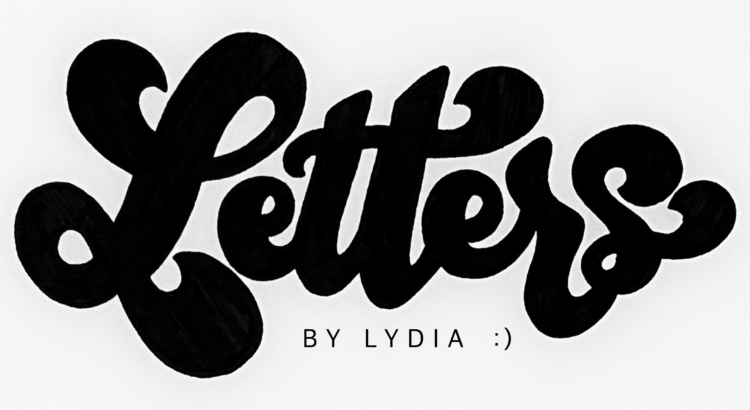Happy Wednesday, y’all!
Today we’re gonna take a bit of a deep dive into the terminology for different types of lettering. Overall, it really doesn’t matter, but I would say the most common question when it comes to lettering is “isn’t it just cursive?” If you don’t know the difference either, no worries! Hopefully this clears things up 🙂
So what’s cursive? I’m sure most of you are aware of what cursive actually is, but things probably get a little foggy in terms of how it differs from other forms of lettering. The main difference is that cursive isn’t really a form of art and instead a style of writing. Cursive is supposed to be a way of writing that’s more efficient than regular writing because your pen never has to leave the page–in other words, it’s practical and more of a fancy-looking shortcut than anything. It’s also much more rigid in terms of style and rules; there’s a cursive alphabet that, aside from a few stylistic variations, is pretty set in stone.

Lettering (synonymous with handlettering), on the other hand, is an umbrella term for all sorts of word art. Calligraphy, which falls under the lettering category, is probably the most similar to cursive. There’s a lot of different kinds of calligraphy, but it’s typically based loosely on cursive, and is centered on the idea of using strokes (you can check out my post on upstrokes and downstrokes to learn more about that!). Unlike cursive, calligraphy is much more flexible and can involve a lot of experimentation or style variation, which in my opinion makes it a lot more fun. You can see my version of a calligraphy alphabet below, and then I also included potential variations of uppercase letters (A) and lowercase letters (I chose “r” because it has a lot of fun options). Some people also refer to this as modern calligraphy, because calligraphy can also refer to the sort of gothic style that would use a pen and ink or some sort of pen with a nib.


Lettering in general essentially just means “drawing letters” in an artistic way. This means that instead of adhering to strict rules like cursive, or requiring the use of strokes like calligraphy, lettering can be any creative depiction of letters. For example, bubble letters would fall under the lettering category, because instead of using lines and strokes to create a letter, you’re using shapes.
There are pretty much limitless other categories that fall under the umbrella of lettering, but some other common ones include brushlettering, which I’ve talked a lot about, faux calligraphy, serif and sans serif, gothic, and tons of other ones. Hopefully that helps clear up any confusion, but feel free to leave any other questions in the comments!
Have a lovely rest of the week everyone 🙂



Leave a Reply
1 Comment on "Letters by Lydia: Cursive vs Calligraphy vs …?"
Believe or not I actually didn’t know this! Very enlightening 🙂